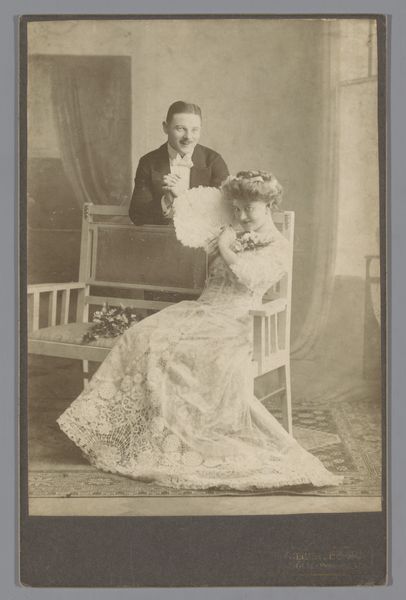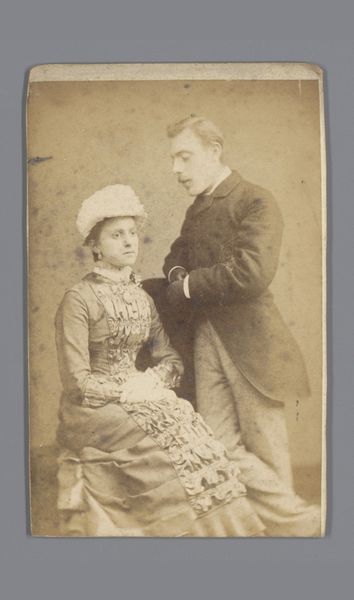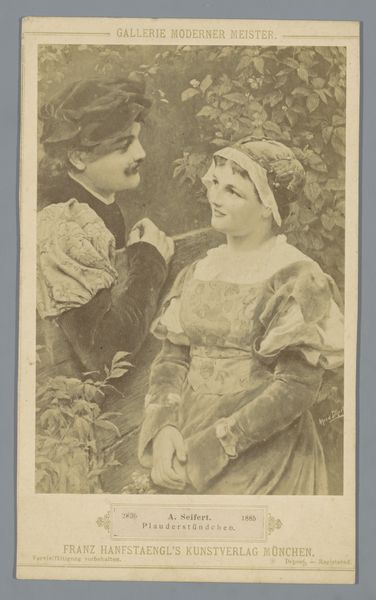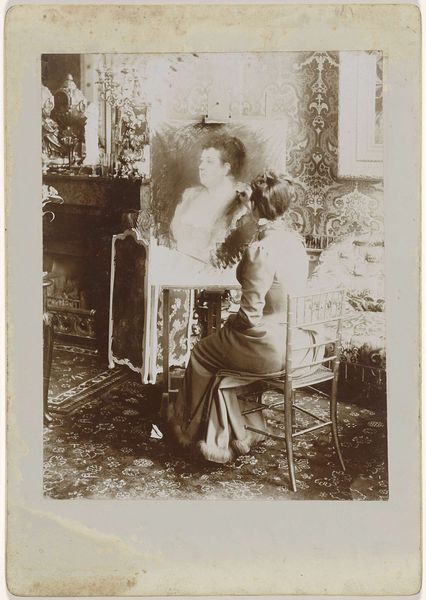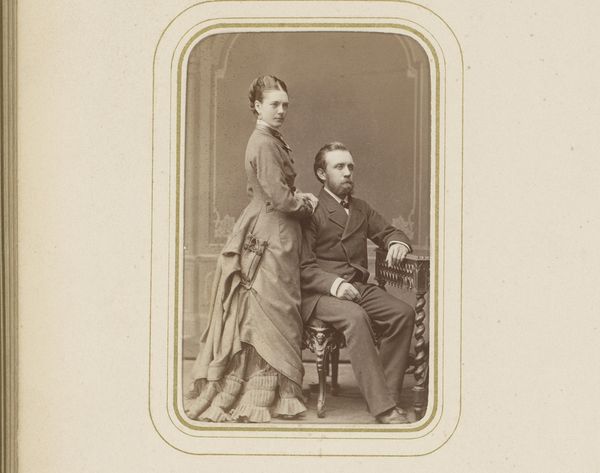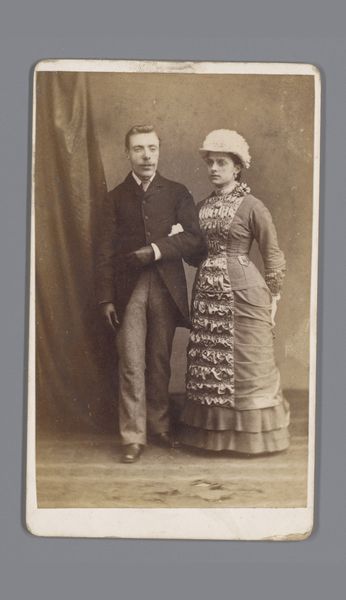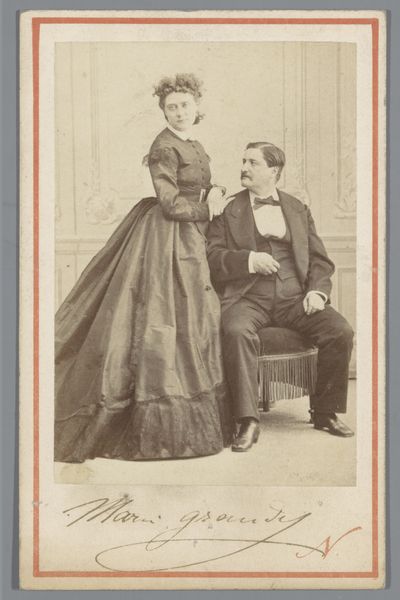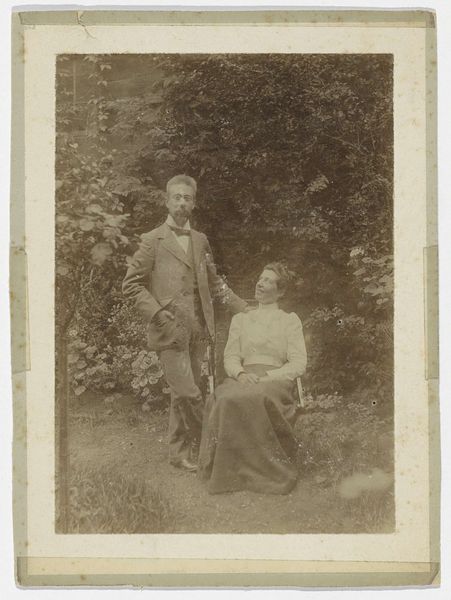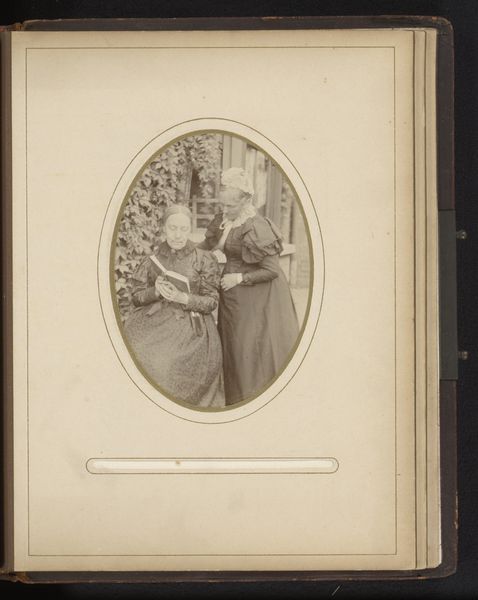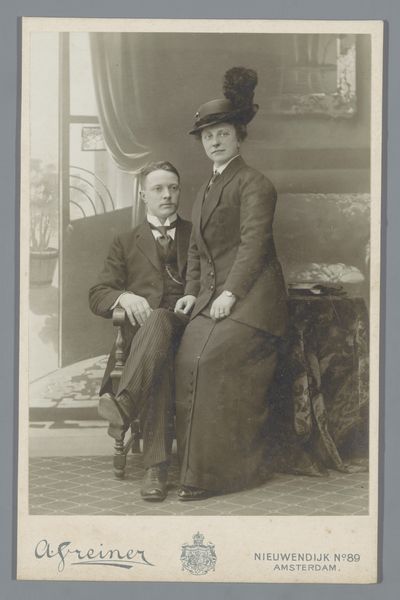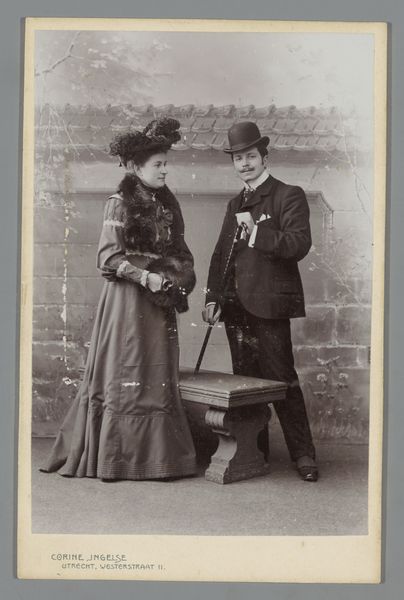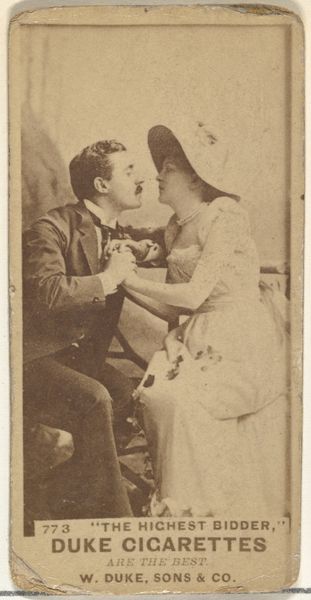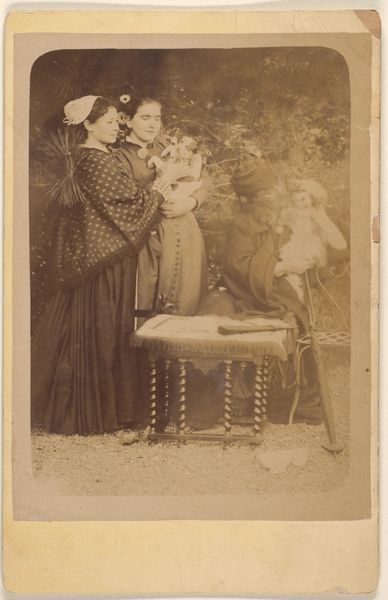
photography
#
portrait
#
photography
#
genre-painting
#
realism
Dimensions: height 137 mm, width 92 mm
Copyright: Rijks Museum: Open Domain
Editor: Here we have a photographic portrait by Léonard Hubert Zeyen, believed to be from before 1915, titled "Portret van een orgelspelende vrouw en een toekijkende man" - "Portrait of a woman playing the organ and a man watching." The sepia tones and staged backdrop give it a quaint, almost theatrical feel. What do you make of this image? Curator: It's interesting to consider this photograph within its material context. We see a specific photographic process resulting in a mass-produced object – a card, likely intended for personal circulation. Note the photographer's studio name imprinted directly on the image itself: Zeyen clearly understood the value of self-promotion alongside portraiture. The subjects aren't presented 'naturally,' are they? They are placed and posed to project a desired image, shaped as much by the studio props as by their clothing and attitude. What do you think this image aims to convey about their social status and roles? Editor: Perhaps wealth and domesticity? She's playing an instrument, suggesting leisure, and he's passively watching. It feels like a statement of their place in society. Curator: Precisely! Now, consider the production of that instrument: where was it made, by whom, and what does that reveal about the consumption habits of the middle class at the turn of the century? This isn't just a photograph; it’s a document of material culture and social relations, capturing a moment defined by access, production, and consumption. Editor: So, you're less focused on their personal story, and more on the objects and processes surrounding the creation and dissemination of the image itself? Curator: Exactly! It's in the making and the using of these materials that we find the broader historical and social narrative. What might seem like a simple portrait unlocks layers of understanding about labor, class, and technology in that period. Editor: That gives me a whole new perspective! I was seeing a simple family portrait, but now I'm seeing the entire economic ecosystem surrounding it. Curator: Precisely; and recognizing that changes everything, doesn't it?
Comments
No comments
Be the first to comment and join the conversation on the ultimate creative platform.
